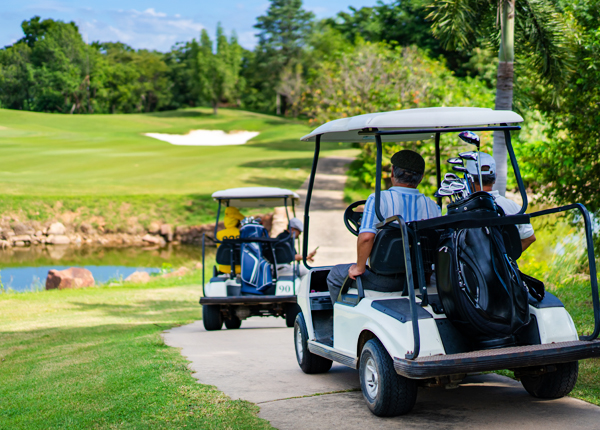Listen to the audio version:
To create a positive experience at your golf course for guests and employees, you have to do more than simply offer well-maintained greens and hospitality. Safety is at the core of a well-operating golf course, where safeguards must be set up to protect everyone on your property against risks like slips, trips and falls, chemical exposure, heatstroke, golf cart accidents and more.
Use this golf course safety guide to make safety a priority at your business, lessen the severity and frequency of claims and protect your bottom line.
7 Proven Strategies to Build an Effective Golf Course Safety Program
Implementing strong golf course safety measures isn’t just recommended; it’s essential in order for your organization to decrease incidents and maximize the efficiency of your operations. According to the Occupational Safety and Health Administration (OSHA), following safety guidelines and procedures has dramatically reduced the number of worker injuries and illnesses each year—from 10.9 incidents per 100 workers in 1972 to 2.4 per 100 in 2023.
For employees, a strong safety culture yields the following critical benefits:
- Fewer lost workdays, increasing the overall productivity and efficiency of your operations.
- Higher employee engagement rates and increased job satisfaction, in which employees feel truly valued by their employers.
- Reduced workers’ compensation expenses, in which fewer injuries mean businesses minimize the number and severity of claims and benefit from lower premiums.
A safety culture isn’t just advantageous for employees; it also is a critical component of delivering a high-quality experience for guests of your golf course and country club. Guests should be able to enjoy your business’s many amenities knowing that they are protected against risks like uneven walkways on the course or pesticide exposure.
To develop a culture at your businesses that prioritizes the safety of everyone that steps onto your greens, incorporate these golf course safety strategies:
How Alliant Can Transform Your Golf Course’s Risk Management Program
Following the safety guidelines outlined in this article is just one component of a comprehensive risk management program. At Alliant Insurance Services, we combine industry-leading risk management strategies and insurance solutions to safeguard your entire operation from today’s greatest threats. We recognize that traditional policies often overlook the risks your business uniquely faces and have developed specialized golf course liability insurance to meet your complete risk management needs.
Alliant Golf & Country Club Insurance offers a wide range of insurance offerings to safeguard your golf course and country club from everything from alcohol overconsumption and employee injuries to pollution liability. With Alliant as your trusted insurance advisor, you’ll have the necessary support in place to drive enhanced risk management and insurance outcomes, ensuring the long-term viability of your business.
Reach out to a representative from Alliant today to learn about golf course liability insurance and how you can create a safe, memorable experience on and off the greens.
Alliant note and disclaimer: This document is designed to provide general information and guidance. Please note that prior to implementation your legal counsel should review all details or policy information. Alliant Insurance Services does not provide legal advice or legal opinions. If a legal opinion is needed, please seek the services of your own legal advisor or ask Alliant Insurance Services for a referral. This document is provided on an “as is” basis without any warranty of any kind. Alliant Insurance Services disclaims any liability for any loss or damage from reliance on this document.





